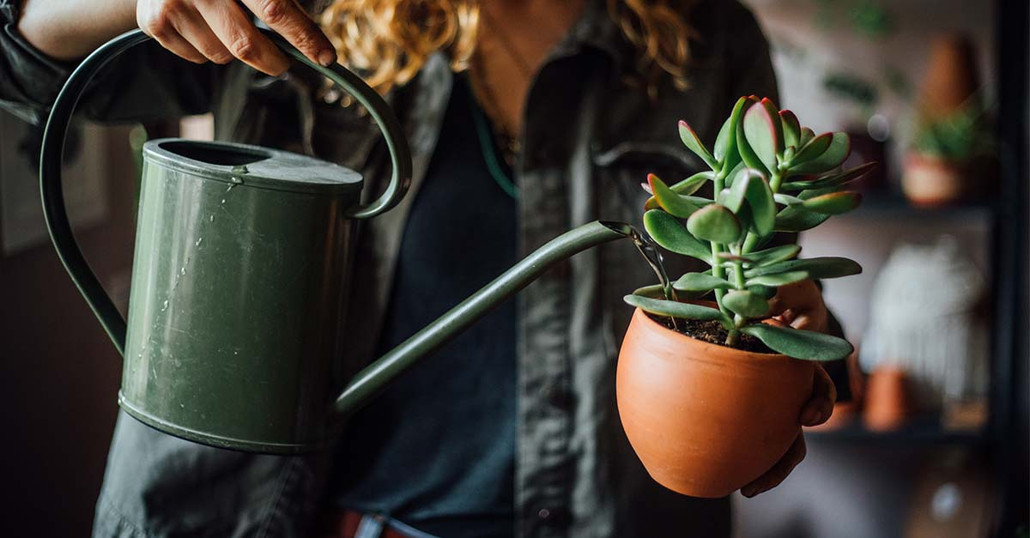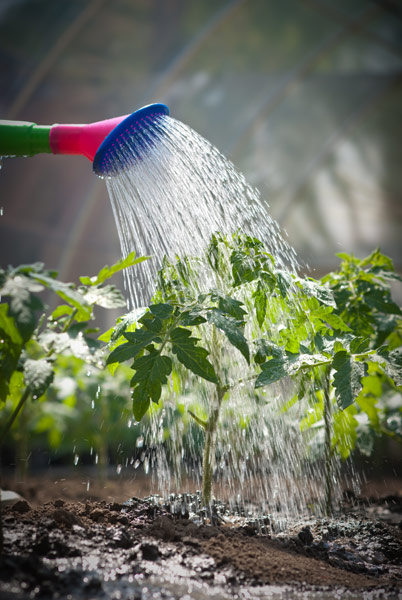
Overwatering Garden Plants
Posted by Grange Co-op on 20th Aug 2019
Everyone knows it’s important to keep thirsty garden plants sufficiently watered, especially during the hottest summer months. But how do you know when you’ve watered too much, or too often? If plants are wilting, does that mean more water is needed? Why is overwatering bad, and what damage can happen when plants receive too much water?
Rest assured: in this GrangeKnows article, we’ve provided answers to these and many more overwatering questions. Read more to save your garden plants and your water bill.

Recognizing and preventing overwatering of your plants is essential to the productivity and overall health of your garden. Over-watering essentially smothers the roots and cuts off the plant’s life-sustaining oxygen supply.
WHAT IS OVER-WATERING?
Over-watering isn’t just a result of an overabundance of water at a given time; it can also result from applying water too often. In the latter case, if the soil is dense or compacted, the surface of the soil and root systems may have too much water, while the lower roots remain dry. Soil and plant roots require time to absorb water applied, so it is important to be aware of your soil type as you plant and set up a routine for maintenance and watering. The success of garden plants and landscaping depends largely on the garden receiving an adequate amount of water without the waste of over-applying water.
Learn More:
For more on soil, click
here.
For drought season garden tips, click
here.
WHY IS OVER-WATERING BAD FOR YOUR PLANTS?
Plants need oxygen as much as they need water; and when you overwater, especially in compacted or clay soils, the soil becomes waterlogged. In waterlogged soil, water totally fills the pore spaces around soil particles which should have an equal amount of oxygen. In this situation, roots and root hairs responsible for the plant’s growth cannot absorb the oxygen they need and can die. The more water there is, the longer the roots are deprived of air and the more root damage may occur. When these roots die or are damaged, they cannot supply plants with essential nutrients and water, growth is stunted, leaves wilt and turn yellow from leaf scorch or leaf burn, buds fail to open, and plants can die.
Watering too frequently is a different kind of overwatering. In this scenario, frequent shallow watering will encourage roots to remain near the soil surface where they are subject to heat and rapid drying out. Hardy, weather and disease-resistant plants are promoted by watering slowly enough to permit moisture to penetrate a minimum of 12” for vegetable gardens and flower beds, and 12-18” for shrubs and trees. With moisture accumulating to these depths, the roots will follow the water, and be protected from overly rapid drying or winter freezes. With each lawn irrigation, we would hope for moisture to penetrate a minimum of 6”.
Edema is another result from overwatering. Edema occurs when a plant’s roots absorb water faster than the plant can use it and its internal cells experience water pressure. This often occurs after a routine of watering in the evening, or just before a significant drop in temperature. These cells can burst and die, then form plant “blisters.” Eventually the blisters erupt and ugly growths form in their place.
When you overwater your plants, you are also putting them at risk of fungal pathogens which can lead to root rot and other issues. The plant’s colors dull and turn yellow, then become soft and break easily. As the roots decay from rot, the plant will eventually die.
DOES WILTING MEAN UNDERWATERING OR OVERWATERING?
Yes and yes. That’s right, a symptom of both underwatering and overwatering is wilting with curled leaves that are discolored and drop off. But the difference lies in the crispness or limpness of the leaves. When you underwater, leaves will become wilted, brittle or crunchy, and dry. Overwatering, on the other hand, causes wilted leaves that are limp.
HOW DO YOU KNOW IF YOU’VE WATERED TOO MUCH?
The most obvious sign of overwatering is wilting. As stated above, leaves will turn yellow and wilted – not crisp and green. Wilting can also occur throughout the plant, including the stem, buds and flowers. You will also notice the plant growing especially slow.
Another indicator of overwatering is the soil in the plant’s root zone. If the soil smells sour or rotten, it generally means it has gone too long without oxygen.
AVOID OVERWATERING
Providing the right amount of water is not only good for your plants, but good for the environment, your water bill, and your time. Here are tips to ensure a successful garden by providing enough water for your plants to thrive, but not so much that it drowns the roots, harms the plants, and wastes water.
- Pick the right plants. While you want to be able to grow whatever you desire, choosing plants that are appropriate for your soil and space can help you avoid overwatering. For soils that drain poorly, use plants that prefer, or can tolerate, constantly moist soils.
- Location is everything. Place plants with similar watering needs together. A good plan is to create three zones with heavy “drinkers” all together, then those that survive with 7-10 days between watering together, and finally all of the real dry-loving plants together.
- Mulching. Adding mulch to your garden bed prevents evaporation of water from the soil. Plants are healthier when they don’t dry excessively between irrigating. Mulching also reduces weather-induced stress to garden plants by maintaining an even soil temperature — cooler in the summer and warmer in the winter. Mulching also improves drainage in heavy clay soils. Gardner & Bloome’s Soil Building Compost or Rogue Natural and Organic Planting Compost are great products for use in the soil or as a top mulch. Click here for more on mulching.
- Water deeper, longer, and less frequently. When you water for a longer period of time but not as often, you are providing water deeper into the soil. This encourages roots to grow deeper where it’s moist, cool and they are able to mine soil for beneficial nutrients.
- Water conservation irrigating. Using a drip line system or soaker hose on a water timer ensures water gets directly to the individual plant, and also helps you to water deeper, longer and less frequently. You have control over when and how long you water, so there’s no more forgetting the hose or sprinkler on for too long.
6. Resist the temptation to water at the first sign of wilt. During the hot summer months, most plants will naturally wilt during the hottest time of day and then recover later in the day. Tomato plants, in particular, naturally wilt during midday as the fruit is taking up the moisture. With sufficient mulching, tomato plants are perfectly fine to go five days between waterings, as long as it is a deep, thorough watering
7. Don’t mistake dry top soil for a dry plant. Generally, the top surface dries out first but this doesn’t necessarily mean it is dry further into the soil near the plant root. Gently dig down a few inches to feel for moisture.
HOW CAN YOU SAVE PLANTS THAT HAVE BEEN OVERWATERED
If you’ve overwatered your plant and see the signs of stress, the following tips can help correct the damage already done.
- Shade your plant from direct sunlight by setting a shade cloth canopy over the affected plants
- Do not fertilize the plant while it’s recovering from root damage
- Remove the plant, if possible, from the soil or pot and place it on newspaper or cloth to wick the water down through the root ball. You can also aid the plant by cutting off any soft, rotten, damaged or dead roots. When replanting, make sure to gently spread the roots out over the soil.
- If it is an established plant in the ground, sometimes a light pruning can help lighten the strain on the root system, thereby allowing it to recover the root damage from overwatering.
- For root rot, products such as Super Thrive or Actinovate can help treat fungal or bacterial infections.
For more gardening tips, speak with a Grange Gardening Expert for additional advice on your exact needs.
